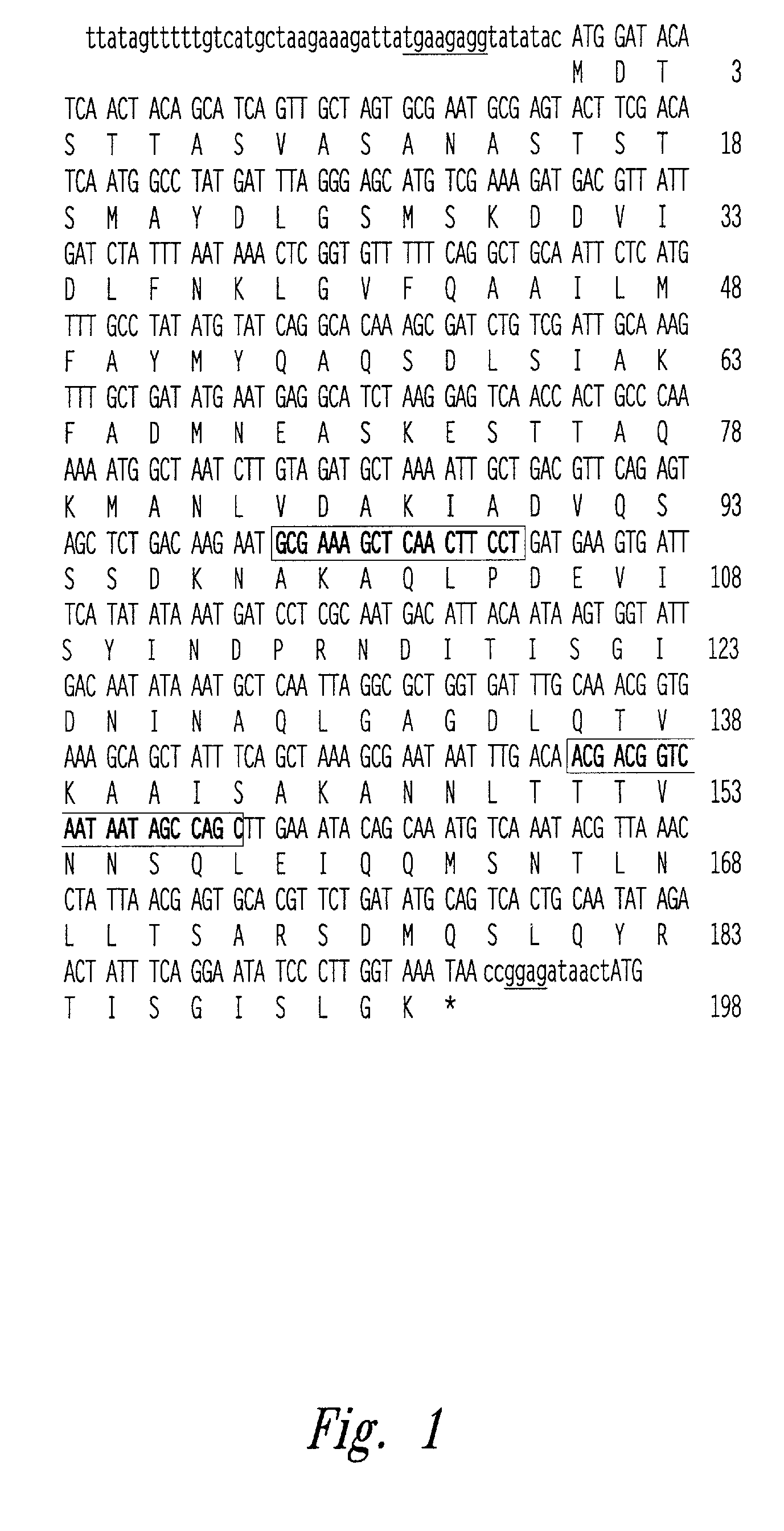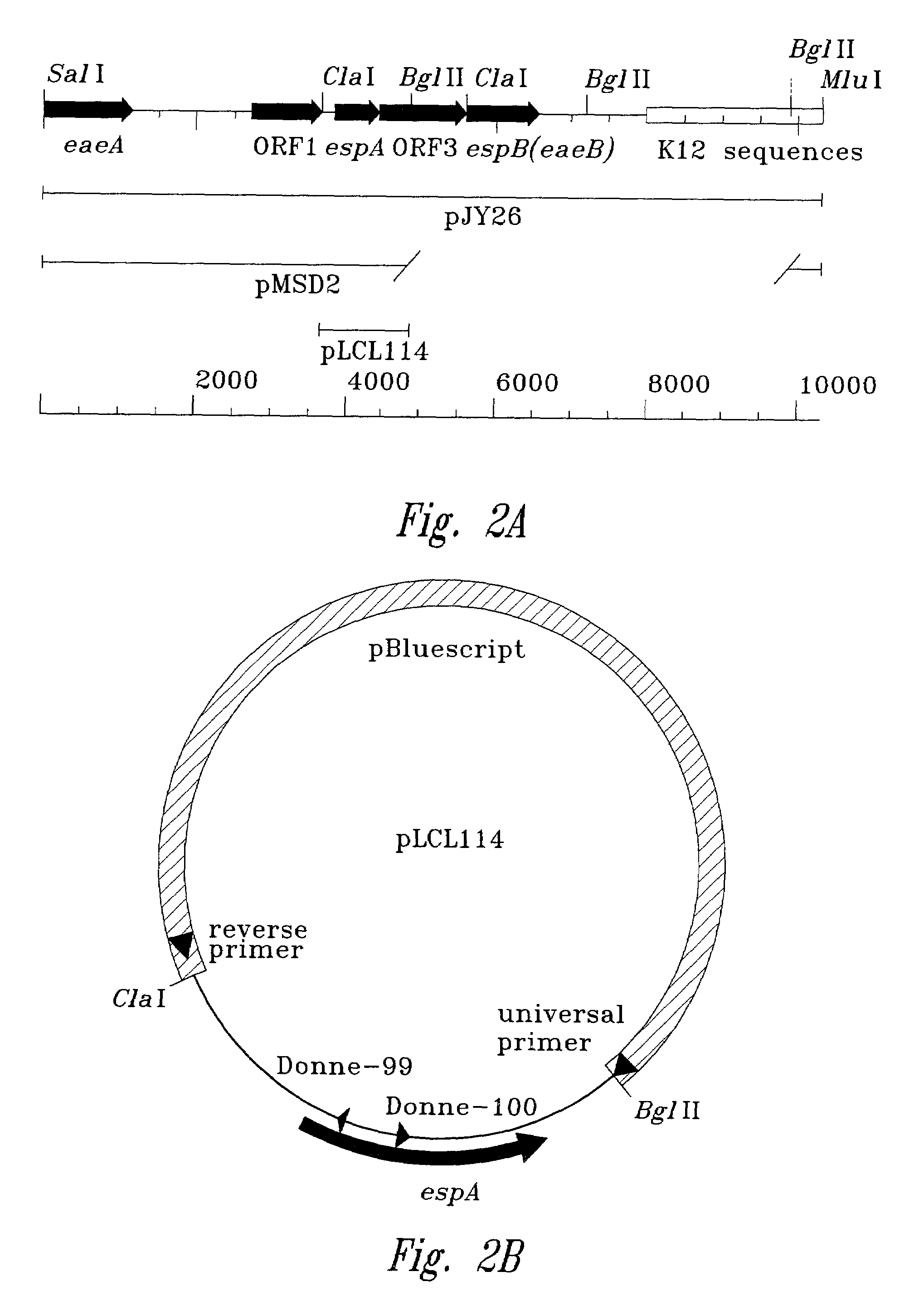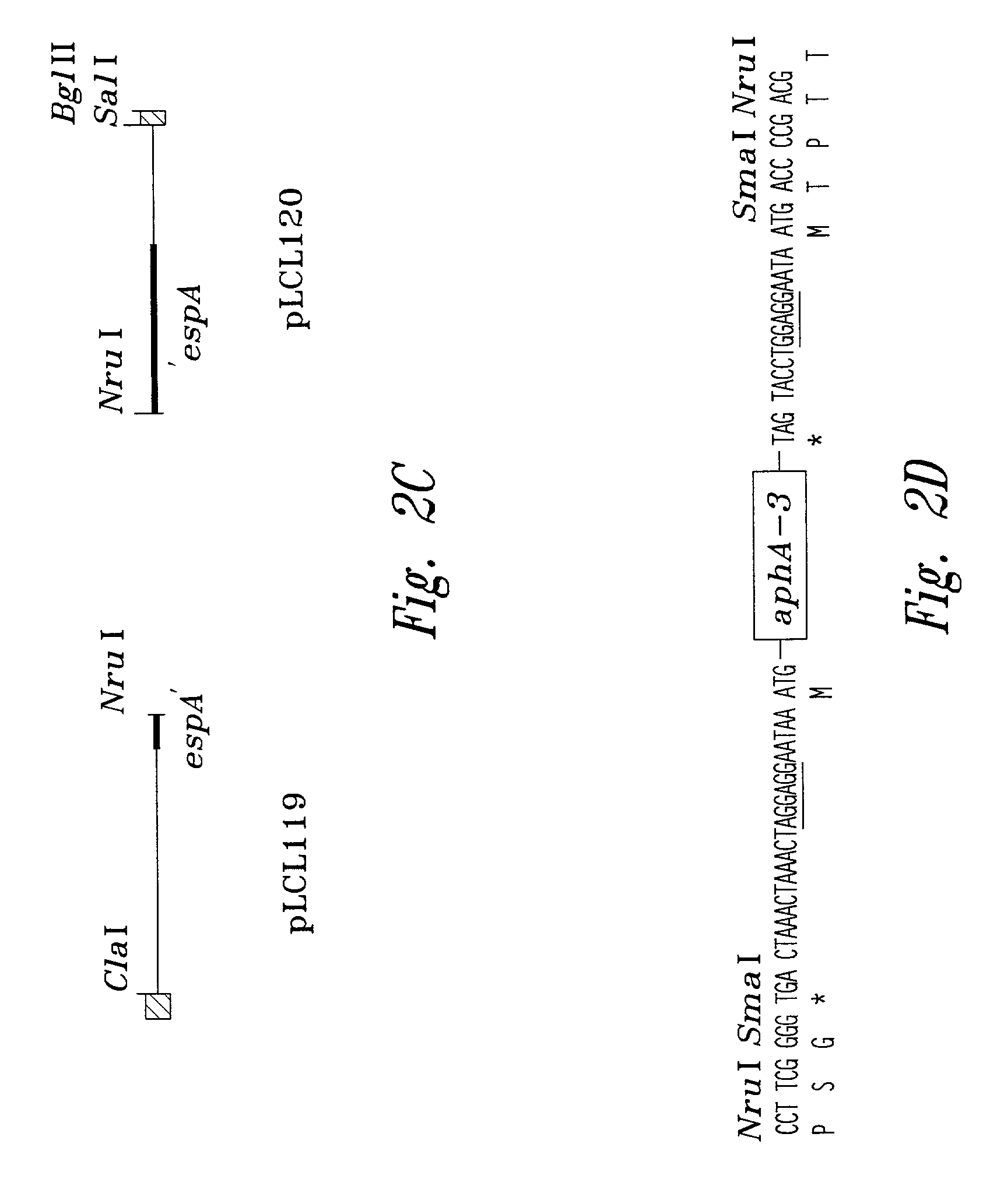Pathogenic Escherichia coli associated protein espA
- Summary
- Abstract
- Description
- Claims
- Application Information
AI Technical Summary
Benefits of technology
Problems solved by technology
Method used
Image
Examples
example 1
DNA Sequence Analysis of the Enteropathogenic E. coli espA Gene
[0092]The purpose of this Example is to characterize espA, a gene responsible for the attaching and effacing activity of enteropathogenic E. coli. The espA gene encodes the 25 kilodalton secreted protein and is located on the enteropathogenic E. coli genome in the Locus of Enterocyte Effacement between eaeA and espB, two loci required for intimate adherence.
[0093]The DNA sequence of the enteropathogenic E. coli Locus of Enterocyte Effacement between eaeA and espB was determined. DNA sequencing was performed as follows: The Sa1I-Bg1II DNA fragment of the Locus of Enterocyte Effacement spanning from within eaeA to upstream (5′) of espB was cloned into the commercially available plasmid pBluescript to create the plasmid pLCL109. A series of nested DNA deletions was made from the end of the plasmid pLCL109 closer to the eaeB gene. These DNA deletions of plasmid pLCL109 were used as templates to determine the nucleotide seque...
example 2
Construction of a Mutation is an espA Gene on a Plasmid and on a Chromosome
[0096]The purpose of this Example was to construct a mutation in an espA gene on the chromosome of an organism. The purpose of this Example was to construct a mutation in an espA gene on a plasmid. The plasmid can then be used to create mutations in the espA gene of other organisms. Plasmids with a nonpolar mutation in espA gene were constructed. Furthermore, a mutant bacterial strain with a nonpolar mutation in its chromosomal espA gene was generated.
[0097]An espA gene with a nonpolar mutation is described in FIGS. 2A–D. The use of the polymerase chain reaction (PCR) generated a deletion with restriction sites that allow an aphA-3 cassette, encoding resistance to kanamycin, to be cloned into the deleted region. This aphA-3 cassette is preceded (5′) by translation stop codons in all three reading frames and immediately followed (3′) by a consensus ribosome binding site and a start codon. The insertion into th...
example 3
Disruption of the enteropathogenic E. coli espA Gene Abolishes Secretion of the EspA Protein
[0101]The purpose of this Example was to identify the protein encoded by the espA gene. A comparison of the amino-terminal sequence data of the EspA protein agreed with the translated espA gene sequence. To confirm this result, the espA deletion mutant, UMD872, was grown in radiolabeled tissue culture media. The deletion of the espA gene results in the loss of the 25 kilodalton radiolabeled secreted protein. This result was confirmed by immunoprecipitation using an anti-EPEC antisera which reacts with the secreted EspA protein. Western analysis using anti-EPEC antisera showed no 25 kilodalton secreted protein. Secretion of the EspA protein was restored when the espA deficient strain was transformed a plasmid (pMSD2) with an intact espA. The increased production by the bacteria of EspA protein encoded by the plasmid reduced the secretion of the other proteins by the type III secretion pathway....
PUM
| Property | Measurement | Unit |
|---|---|---|
| Temperature | aaaaa | aaaaa |
| Fraction | aaaaa | aaaaa |
| Length | aaaaa | aaaaa |
Abstract
Description
Claims
Application Information
 Login to View More
Login to View More - R&D
- Intellectual Property
- Life Sciences
- Materials
- Tech Scout
- Unparalleled Data Quality
- Higher Quality Content
- 60% Fewer Hallucinations
Browse by: Latest US Patents, China's latest patents, Technical Efficacy Thesaurus, Application Domain, Technology Topic, Popular Technical Reports.
© 2025 PatSnap. All rights reserved.Legal|Privacy policy|Modern Slavery Act Transparency Statement|Sitemap|About US| Contact US: help@patsnap.com



